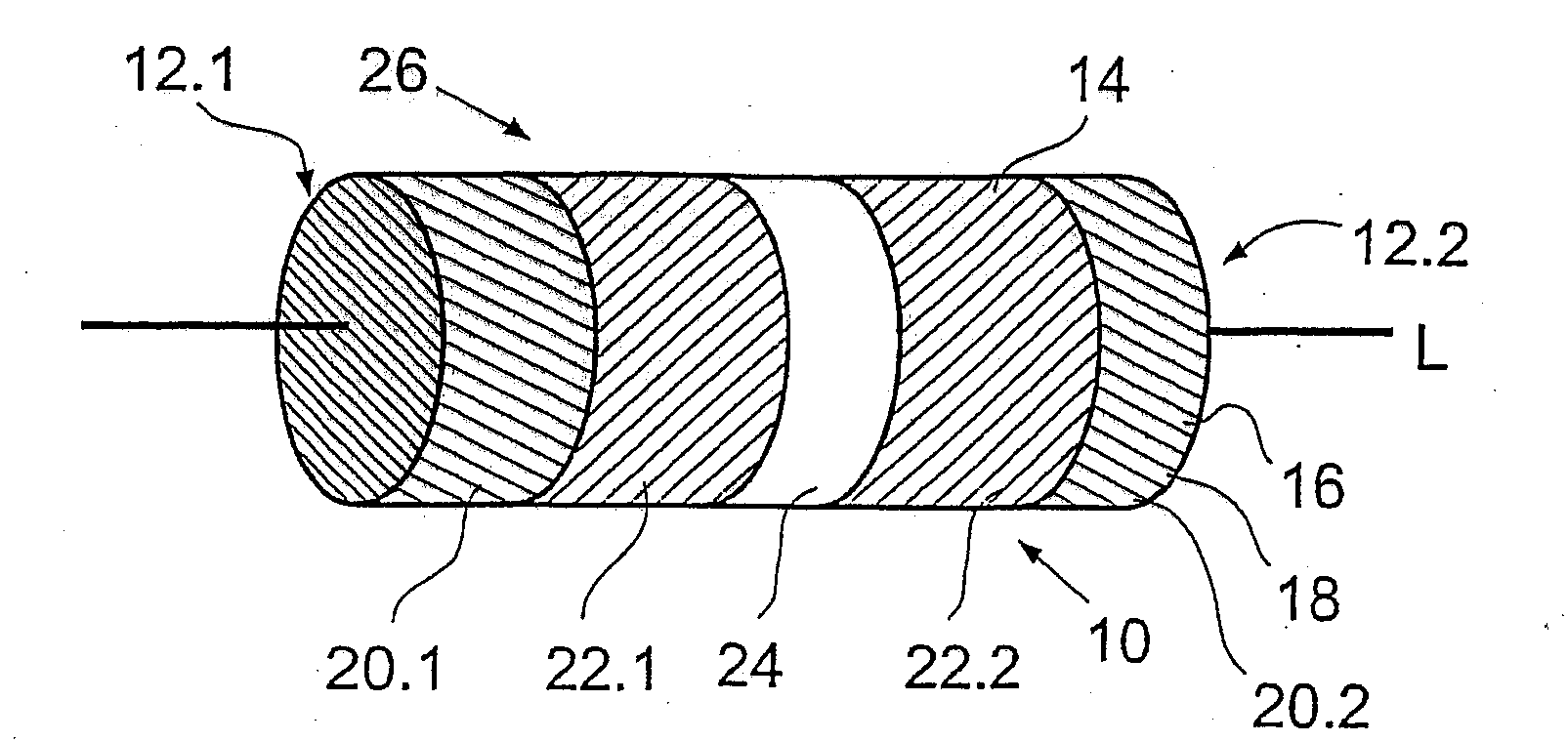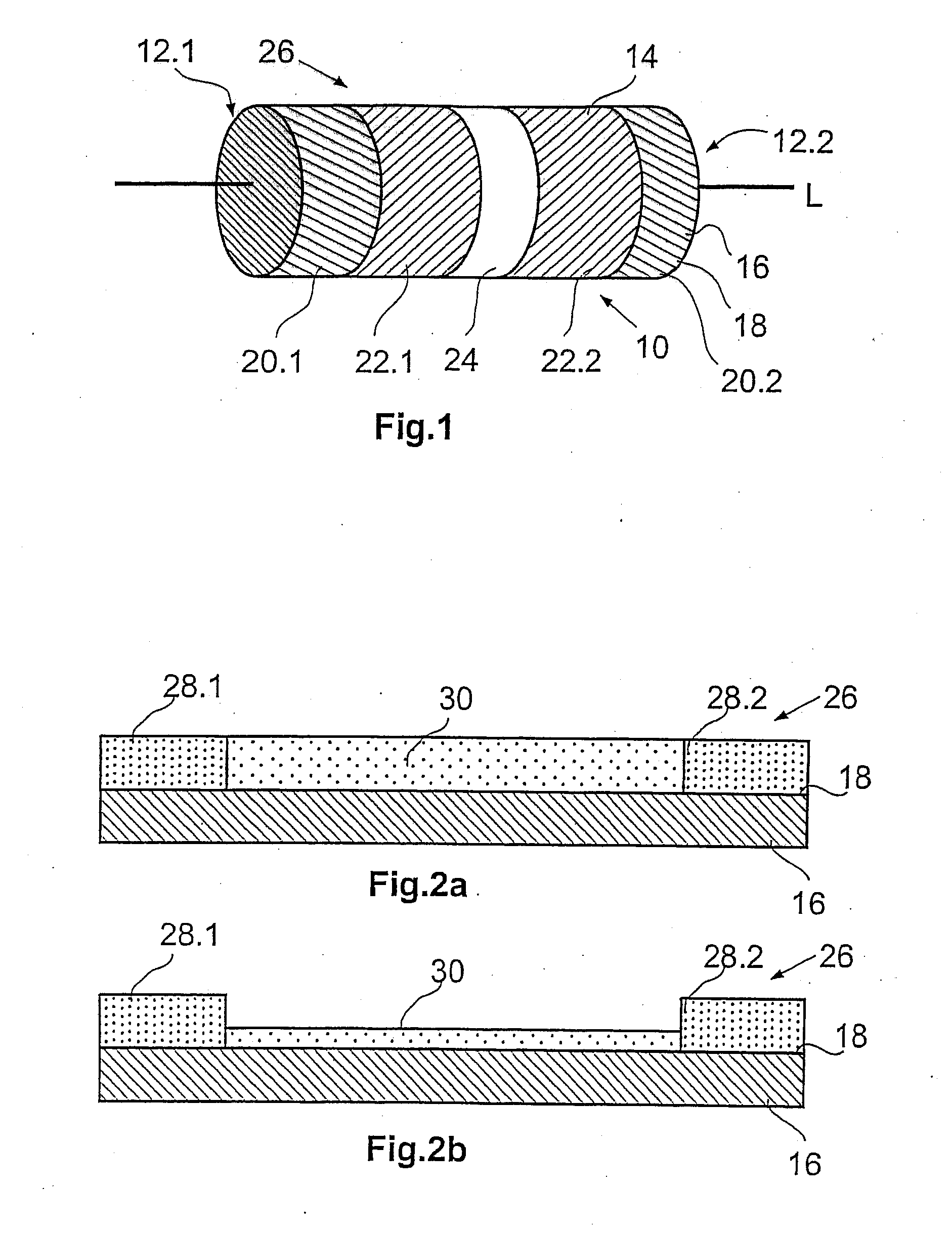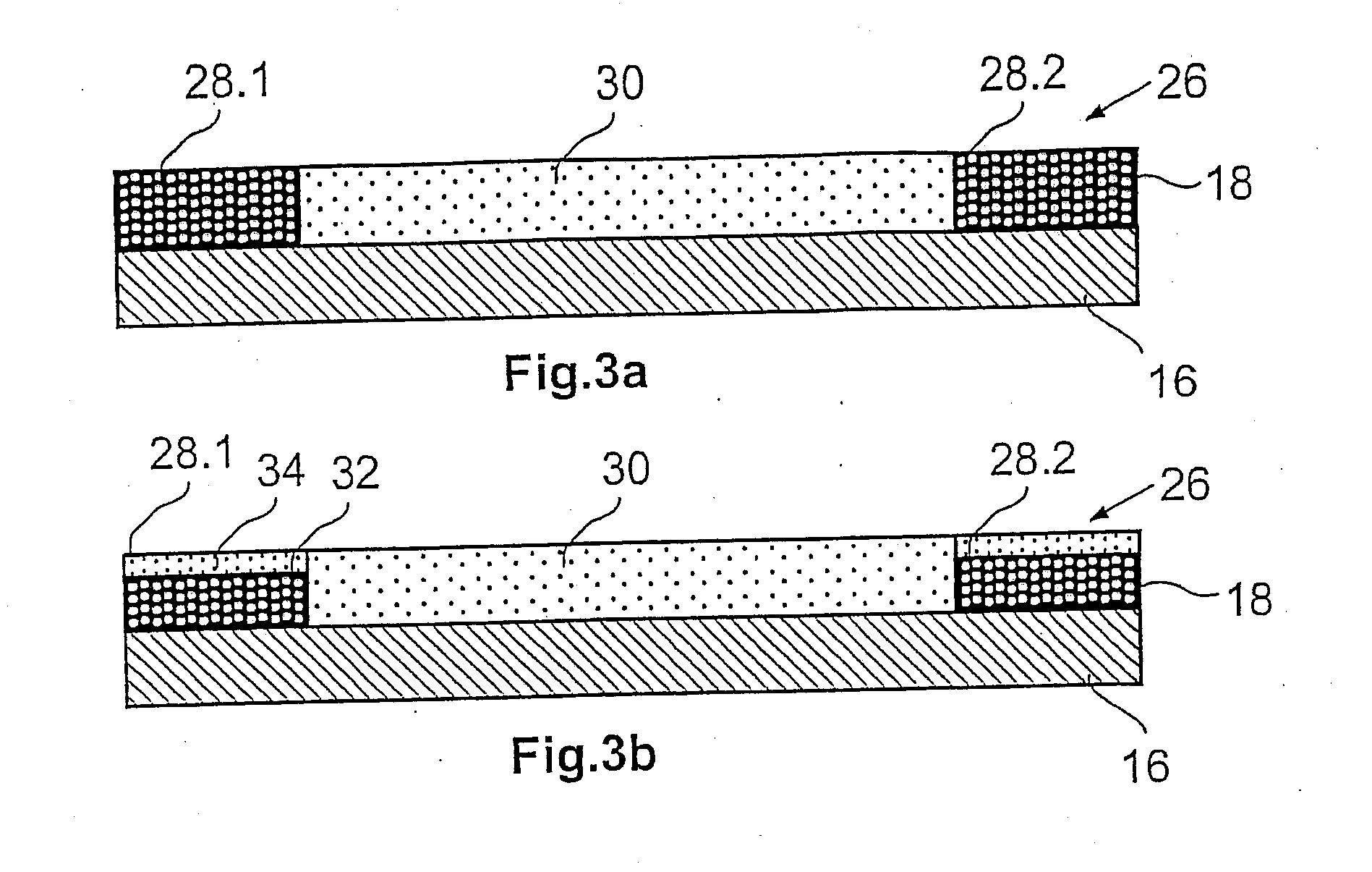Control of the degradation of biodegradable implants using a coating
a biodegradable and coating technology, applied in the field of at least predominantly biodegradable endovascular implants, can solve the problems of undesired complications, stent growth over, and known biodegradable stents that do not display local tailored degradation characteristics
- Summary
- Abstract
- Description
- Claims
- Application Information
AI Technical Summary
Benefits of technology
Problems solved by technology
Method used
Image
Examples
Embodiment Construction
[0033]FIG. 1 shows a strongly schematic perspective side view of a stent 10 having a tubular main body 14, which is open at its ends 12.1, 12.2. A peripheral wall 16 of the main body 14, which extends radially around a longitudinal axis L, comprises segments situated neighboring one another in the axial direction, which are in turn assembled from multiple support elements situated in a specific pattern. The individual segments are connected to one another via connection webs and, when assembled, result in the main body 14. In FIG. 1, the illustration of a specific stent design is intentionally dispensed with, since it is not necessary for the purpose of illustrating the present invention and, in addition, it is necessary to individually adapt a coating to the particular geometric factors and other parameters provided for each stent design. Stent designs of greatly varying implementation are known in manifold forms from the related art and will not be explained in greater detail here...
PUM
| Property | Measurement | Unit |
|---|---|---|
| Thickness | aaaaa | aaaaa |
| Biodegradability | aaaaa | aaaaa |
| Degradation properties | aaaaa | aaaaa |
Abstract
Description
Claims
Application Information
 Login to View More
Login to View More - R&D
- Intellectual Property
- Life Sciences
- Materials
- Tech Scout
- Unparalleled Data Quality
- Higher Quality Content
- 60% Fewer Hallucinations
Browse by: Latest US Patents, China's latest patents, Technical Efficacy Thesaurus, Application Domain, Technology Topic, Popular Technical Reports.
© 2025 PatSnap. All rights reserved.Legal|Privacy policy|Modern Slavery Act Transparency Statement|Sitemap|About US| Contact US: help@patsnap.com



